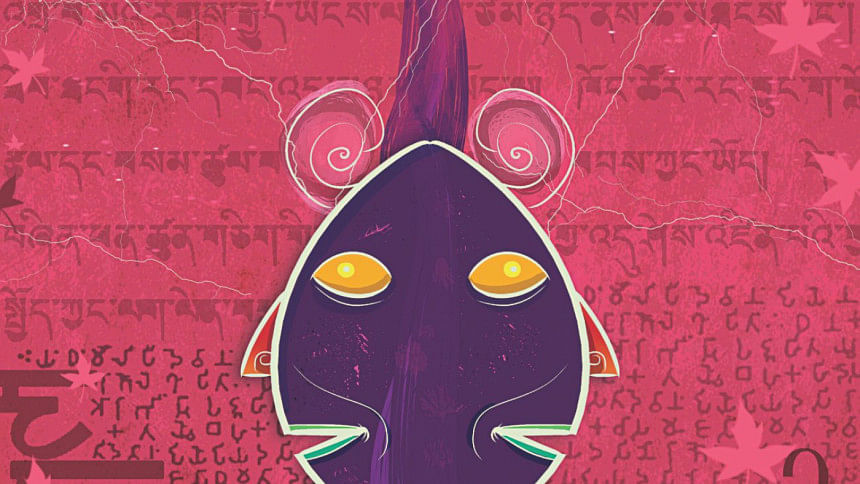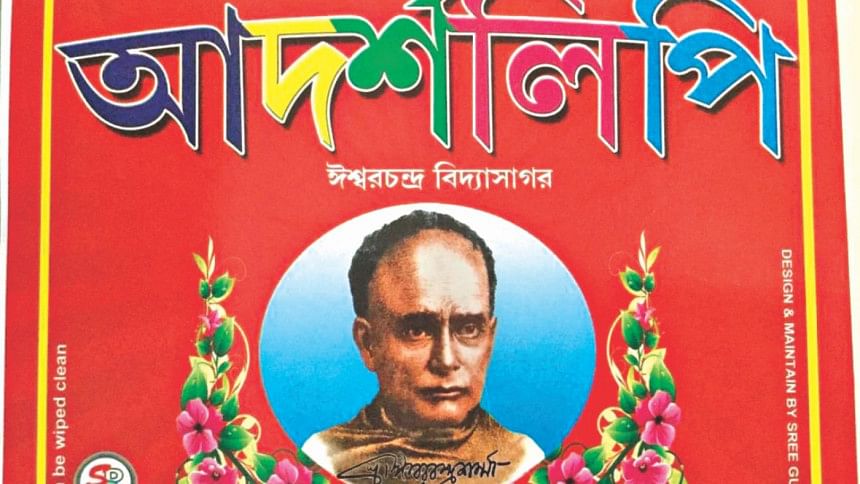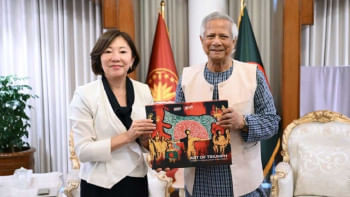Evolution of Bangla

It has been long argued that language affects the way we think and the way we perceive the world around us. If this is true, Bangla will have had an immense impact on those who speak it. Today we will journey through time to take an in-depth look into the language spoken by over 250 million people worldwide, and how it has shaped and is re-shaping the land of Bengal and its inhabitants.
Bangla can be traced back to 3500 B.C. from the Indo-European language family. This branched out into the Indo-Aryan languages, which eventually evolved into the many dialects spoken in the sub-continent. Although many assume that Bangla was born from Sanskrit, there are scholars and linguists who believe that this language was derived from Indo-Aryan languages like Magadhi Prakrit and Pali.
Modern Bangla comprises of words taken from languages like Turkish, Portuguese, Persian as well as English. This effect can be explained through the eras of different rulers of Bengal.
Through all these transfigurations, the evolution of Bangla can be divided into three stages: Old Bangla, Middle Bangla, and Modern Bangla.
OLD BANGLA
This era dates back to around 650 A.D. when Sanskrit was widely used in literary works by priests and scholars in Bengal. However, notable linguist Dr. Suniti Kumar Chatterji coined the language of the common people as variations of Magadhi Prakrit, while educationist Dr. Muhammad Shahidullah, argued that it should be called "Purbo Magadhi Prakrit".
However, this is considered to be somewhat of a dark area in our history of Bangla literature since hardly any traces of literature can be found from this time. The oldest text ever found being Charyapada, a collection of mystical poems of revelation based on Buddhism, which is thought to have originated between the 8th and 12th centuries.
MIDDLE BANGLA
During the 14th century, the Sultanate of Bengal was established through the Muslim invasions. The Sultanate established Bangla as the official court language of the region and it soon became the vernacular language of Bengal. Brahmins began producing religious texts like Sreekrishna Kirtana and Manasamangal which were collections of poetic verses on Hindu deities. However, this version was still very different from the modern Bangla that was yet to develop.
In the 16th century, the Mughals took over Bengal and the rich Persian language they brought with them began to influence our native tongue. Muslim Bangla writers began incorporating Persian philosophies in their literary works. These influences are prominent in ghazal and Sufi compositions. There were instances of these influences even in Hindu literature, like the Vaishnava Padavali. The Baul songs we are familiar with were also composed during that time.
MODERN BANGLA
Around the time of the Battle of Plassey in 1757, the modern rendition of Bangla took shape from the dialect spoken in the Nadia region of Bengal. However, the language was split into formal and casual versions. These eventually came to be known as "shuddho bhasha" and "cholito bhasha".
As Western influences began shaping local cultural norms, more people began to look for a more sophisticated and refined lifestyle. A demand for literature and fine arts grew with it. Starting with Durgeshnandini by Bankim Chandra Chattopadhyay's Durgeshnandini in 1865 kick- started a literary revolution where a slew of Bangla literary texts emerged, with stories and poems of romance, drama, and thought-provoking fiction. Notable writers of this era include Ishwar Chandra Vidyasagar, Michael Madhusudan Dutta, and Jibanananda Das among others.
This era also brought us Begum Rokeya, a cherished Bangla writer and feminist, who established the first school for Muslim girls in Kolkata, and the Bengali polymath Rabindranath Tagore, a pioneer in Bangla literature and the author of our national anthem. Through his vast collection of poems, short stories, plays, and novels, he would re-define the literary landscape of Bengal for years to come. Kazi Nazrul Islam, our national poet, also made a huge impact in our literature during this time, through the rebellious and religious themes of his work.

POST-PARTITION BANGLA
After the partition of 1947, much of our literary prowess and cultural norms would be threatened by political forces. The strategic obstruction of Bangla began in 1948, when the government of the dominion of Pakistan ordained Urdu as the only national language of the state.
This ruling caused major civil unrest as several scholars and activists expressed their concerns, stating that this would make the majority Bangla-speaking people of East Pakistan ineligible for work in government positions. This resulted in several students and activists rallying the streets of Dhaka in protest. Following the unrest, Muhammad Ali Jinnah arrived in Dhaka and on March 21, 1948, he gave his infamous declaration that only Urdu will be the state language of Pakistan and all those who defy this ruling are enemies of the state.
On the morning of February 21, 1952, students began to gather in the University of Dhaka premises in defiance of Section 144 imposed by the then government of Pakistan. As the students rallied through the campus, police began arresting students and open fired at the rallies, killing many on spot. As news of the atrocities broke, more than 30,000 people gathered at Curzon Hall the very next day in solidarity for the fallen martyrs of the protest.
By the dawn of February 24th, the students of Dhaka Medical College constructed the Shaheed Smiritistombho (Monument of Martyrs) and since its inception, February 21st has been considered a day of mourning. On February 29th, 1956, the Pakistani parliament finally declared Bangla as one of the official languages of the state.
The events of the language movement not only led to the eventual formation of Bangladesh in 1971, but made a huge impact in the development of Bangladeshi culture and literature. Since the declaration by UNESCO in 1999, the 21st of February has been marked as International Mother Language Day, paying tribute to the Language Movement of 1952.

PRESENT DAY BANGLA
Since the Liberation War, our language and cultural norms have evolved drastically due to the widespread globalisation that brought new cultural influences.
Tareq Reja, Professor at the Department of Bangla in Jahangirnagar University, gave us his views on how our language has changed and whether or not this transformation could be considered detrimental for the language. He stated, "Language and culture are very closely related. Technological advancements and changes in human values are playing a huge role in the evolution of Bangla. While this change is inevitable, it should always be natural and not forced. More and more foreign words are finding their way into the Bangla vocabulary and making it easier to communicate. But at the same time, various forms of media are distorting our language by the use of irrelevant words and phrases. This trend is harmful for our future generation and for the preservation of our rich heritage."
However, not everyone shares this sentiment. Tasfikal Sami, an aspiring writer and student of University of Dhaka said, "Bangla is very diverse with its numerous colloquial accents and subcultures. Back in the day, everybody in films or TV shows would speak strictly in the standard accent and that was the norm. But now, we are going through a very interesting phase where everybody has a voice that they can use through different media to influence others. I personally believe that is a good thing for the language in general. All these different elements are adding layers to the beauty and versatility of the Bangla language."
FUTURE OF BANGLA
However, the concern that Bangla is losing its authenticity is not entirely invalid. Many feel that the youth today are not as proficient in Bangla as their predecessors.
Syed Azizul Huq, Professor at the Department of Bangla in University of Dhaka, feels that it is important that children learn their mother language properly. He added, "If children don't know about their own language or culture properly, then how will they love their country? If they can't learn to love their country, it will affect the growth of the nation as a whole. That is why it's essential that we teach our children about their roots so they can become complete human beings."
Hasanul Chowdhury, writer at a local newspaper publication, feels that the burden of teaching children proper Bangla falls on the adults. "It seems to me that the quality of education in schools and universities has significantly deteriorated over the last few decades. We need teachers and parents alike to guide the students so they can understand the importance of learning. If that motivation is established, the future generation can grow to love and appreciate their mother tongue," he mentioned.
Bangla has shaped, and is shaping, the reality we are living in. In turn, we have kept alive the love we share for this language through the many songs and stories written by those who lived through the dark nights of the pre-independence era. This strength and the history we share is what will help Bangla evolve while we evolve with it.
References
1. "When was Bangla Language Born?" Link: https://www.youtube.com/watch?v=cEvIr_IxWYE
2. "Bengali Language at Cornell". Department of Asian Studies. Cornell University. Archived from the original on 2012-11-15. Link:
3. https://web.archive.org/web/20121115131805/http://lrc.cornell.edu/asian/courses/bengali

 For all latest news, follow The Daily Star's Google News channel.
For all latest news, follow The Daily Star's Google News channel. 



Comments